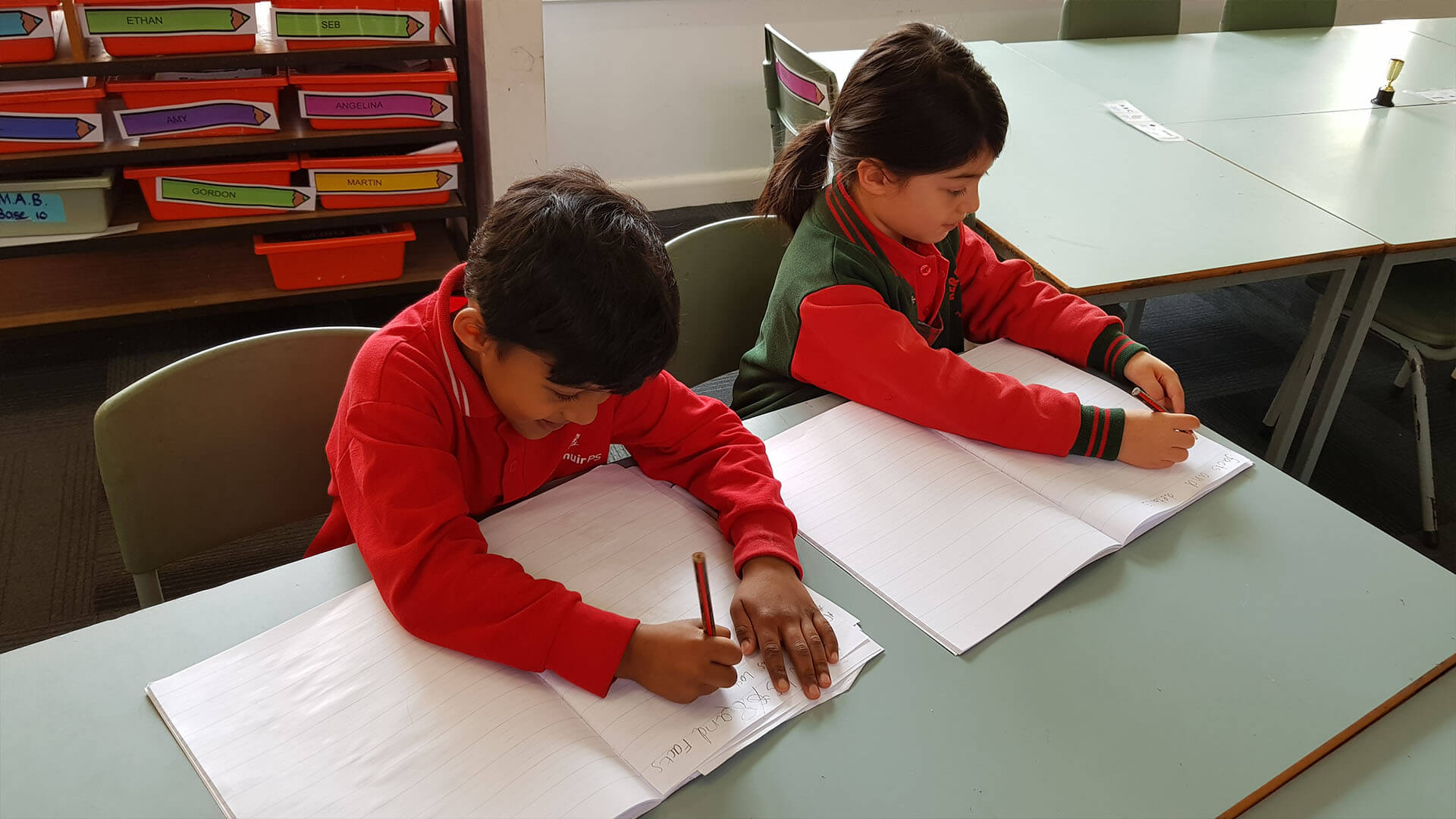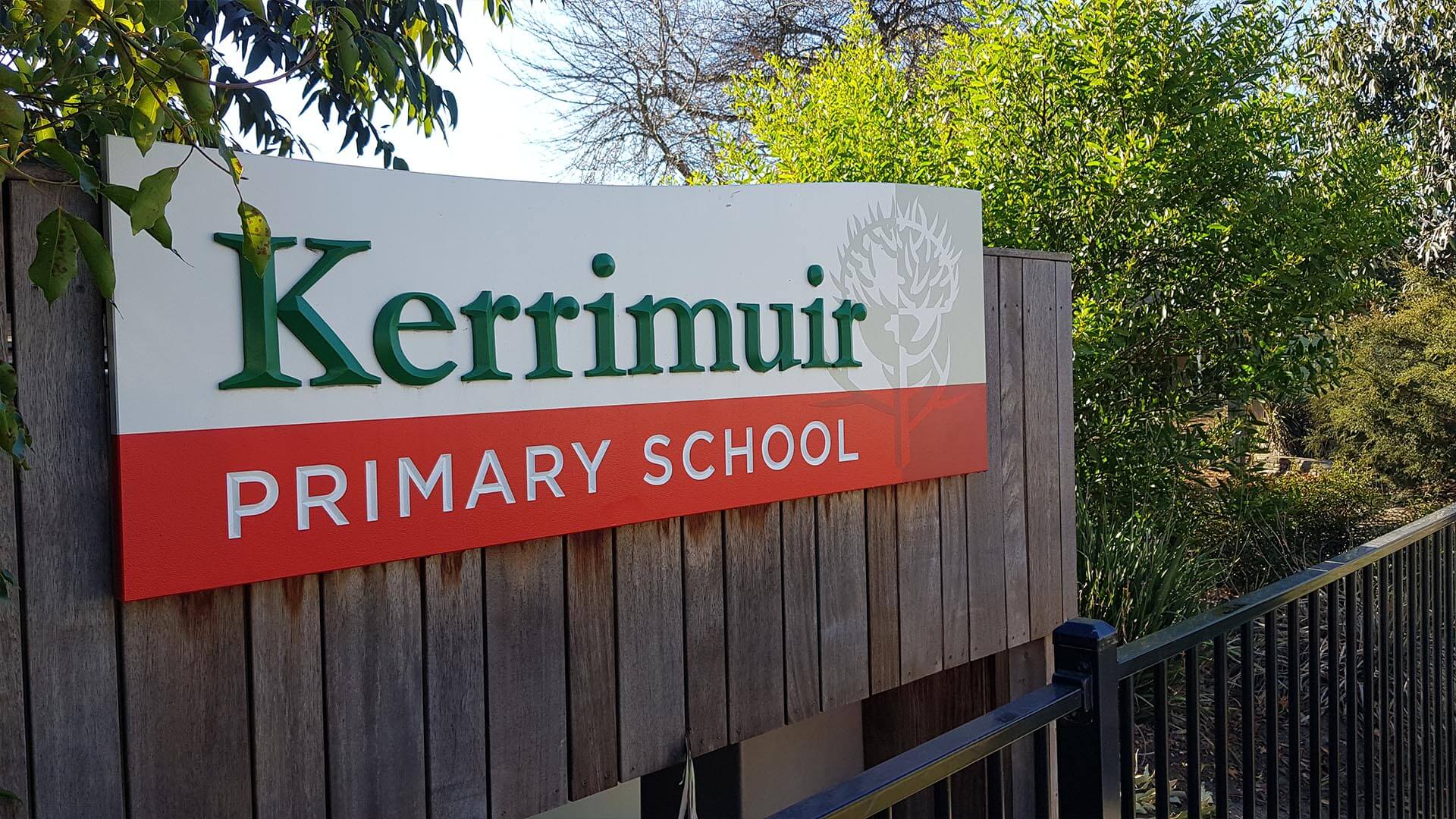



Differentiation
‘Differentiation’ means that teachers proactively plan varied approaches to what students need to learn, how they will learn it/or how they will show what they have learnt in order to increase the likelihood that each student will learn as much as he or she can, as efficiently as possible.”
At Kerrimuir we differentiate to the largest degree when teaching literacy and numeracy and in homework. We try to ‘hit the mark’ academically in all areas of curriculum, ensuring that each child experiences improvement and success every day. To ensure this occurs each child sets goals with their teacher, using the SMART goals structure. Ideally, each child should have at least 2 goals for each part of literacy and numeracy, along with behavioural and organisational goals. A broader goal for topic work (integrated units) is also of use.
Creating the RIGHT Environment The right learning environment is necessary for effective differentiation, therefore it is the teacher’s responsibility to create and foster an environment that is safe, challenging and supportive for each student; reflects a teacher’s growth mindset about each student; reflects a teacher’s growth mindset regarding his or her own work; ensures that every student has to work hard and that success follows the hard work; ensures good teacher-student relationships in order to build the trust for the risk of learning and connects students as a team or community of learners with a shared goal and support for one another’s success.
Quality Curriculum Each lesson should have a ‘learning intention’ and a ‘success criteria’ so that the children know what is expected of them. The students should be able to tell a visitor what they are doing, why they need to know these things, what their work should be like when finished and what they should do if they finish early. Lessons should be focused on developing students’ understanding and concepts rather than just completing an activity. The lesson should also engage the students with their learning. This can be achieved in a variety of ways, including having real life connections in lessons, focusing on students’ personal interests, using current topics/issues or drawing on the experiences of the students. It is very important to “TEACH UP”, which means we create high end curriculum and scaffold student success in order to reach the level of learning. This gives all students the opportunity for success at the same level, whilst giving the right support to the students as necessary.
Effective Assessment To ensure we can differentiate effectively we must assess using effective means in order to be able to group children for literacy and numeracy activities accurately. Groups are not set, they are flexible, and when children improve they should be moved up into the next group. Different groups should be in place for reading and writing and each topic area covered in Maths. To enable this to occur, pre-testing and post-testing is required. Pre-testing gives data in order to create groups and post-testing tells us how effective our teaching has been for each individual student. If a child does not improve adequately over a particular topic a small ILP could be developed in order to assist. Also, homework for this child could be in the area of need. In some cases, a teacher may develop lessons for the parent, an aide, or a parent helper to use with the child. Where possible, lack of growth in an area should be addressed during the teaching of the topic, in order to ensure better post-testing results. We are always seeking growth!! If a child is not moving, or goes backwards, the class teacher needs to start putting things into place in order to improve the student’s skills, such as speaking to the parents to see if the child is unwell or tired, and using encouragement to try to reverse the situation. The teacher must be prepared to alter their teaching in order to fit the student’s learning style, if this is the issue.
Instruction Teachers should be using a substantial repertoire of instructional and management strategies to address the different stages of learning within classrooms. Teachers will need to consider various aspects of learning, such as a student’s readiness to learn new content, a student’s interests and a student’s preferred learning style. Grouping of students needs to be flexible and monitored to ensure that students are working in the target zone with sufficient scaffolding to support their learning. Instructional plans need to be modified using the assessment for and as information as a guide, ensuring students are learning the appropriate content. It is vital that teachers understand the “continuum of learning” and target explicit teaching where it is needed. Teachers need to be able to challenge students to work at the next step in the continuum and provide the scaffolding necessary to support each student.
Managing a Differentiated Classroom The focus of teaching must be based on a ¬¬student-centred philosophy, teaching students at the point of need with the correct scaffolding to ensure success. As the leader in your own classroom it is vital that you share the vision of ‘what success looks like’ and how the students can work to achieve it. Students need to feel empowered and part of the development of this vision. Teachers and students must work as a team to achieve the set goals and encourage student self-direction. Your students need to know that you as their teacher, believe in them and their ability to be successful and INDEPENDENT learners.
Differentiation
- In Reading and Writing activities four or five groups should be operating in most classes. In Maths three or four groups is often adequate. You may split differently for Maths so that those needing direction or explicit teaching are always with you to start with.
- A whole group focus should start a lesson. Groups should be levelled closely where possible. With significant outliers (students especially above or below others) an individualised program will be necessary. Where-ever possible, parent helpers should be used to look after one to two groups, allowing the teacher one or two teaching groups. Activities for the groups should not be rotations of the same activities for each group, as this is really a whole class lesson split into groups. They may have the same topic, with variations according to needs and current skills.
- Each lesson should conclude with a sharing, pointed end, significant conclusion or journal reflection.
- At every opportunity teachers should create anchor charts with their students to use as scaffolding for new skills. These should be displayed around the room and should be available for the students to continually check and use when working. This will assist them in learning new skills and l place the learning responsibility onto the students.
- Resources for children with autism, learning difficulties, and those with processing issues or intellectual disabilities include visual charts and organisers, such as visual timetables. These are useful for Preps to Grade 6 and should be in every classroom.
- To enable children to develop skills of responsibility for their own learning teachers will need to layer learning in organisational and social issues across the whole day. In order to do this please remember the pyramid discussed by Brooke Cross and put in place the bottom levels in order to help you avoid the top reactive level. Loud voices are for emergencies and should not be heard regularly in any classroom. This does not mean you cannot use a serious voice, as is important for children to be able to tell when they must respond immediately. Regularly raised voices show that a teacher is out of control.
- Deep learning is always our intention, so delve into deep issues using good questioning techniques. Remember to allow think time for your students. There are fast thinkers and contemplative thinkers – both are very valuable. Encourage pair chats when dealing with the whole class, so that everyone has the chance to speak.
- Ensure that your students needing support and extension are on ILPs, and that the ILPs are regularly signed off and re-written. Two a year is an absolute minimum for such students. Remember to speak to others about children that concern you early. Anne Italiano, Mandy Coate, Team leaders, Sub-school leaders, the AP and the Prin are all willing to help. If everything is not working speak to Nicole about a possible referral to the Psychologist or Speech pathologist.
- Topics can be differentiated via open ended questioning, enquiry and deep questioning. You may want to consider creating groups with appropriate mixes of skill levels, where students have set tasks, such as in co-operative groups. For larger groups, this gives everyone a job and a focus and can lead to better outcomes. Paired groups are the easiest to get working well.
- ‘Experts’ in various areas can also give some responsibility to your extension groups. Please ensure you ‘train the trainer’ to ensure that your experts don’t give answers, rather guide toward answers. Excellent experts can be great for those struggling and those who are the expert. Remember also to highlight the importance of empathy and confidentiality for your experts.
- Rubrics should be developed/created and/ or found where-ever possible, with the intention of showing the students what to aim for. Reading strategies should be an anchor chart but developing a character description could be shown on a rubric. VELS/ Australian Curriculum can be used for some parts of a rubric, but generally they break down the intrinsic parts of the whole so children are able to tick off/ highlight the features in their work and see what they need to try out if they want to progress further. If a child gets all the last column features (i.e. There is nowhere further for them to go), you need to develop another column in the rubric for them for next time they use it.
- It is expected that ICT, IWB and/ or iPads will feature in groups for each literacy and numeracy session. Use of the IWB is often a good start to a lesson. Orally read serial stories should be available to as many children as possible children as long as they can ‘read along’ when the teacher is reading to the class. This is also the same for class novels. Where-ever possible encourage children to bring extra copies of the book along for a small group to follow. This can increase fluency in reading and helps maintain interest for many who are visual learners. Teachers are expected to dramatise story reading to their class – carrying on like a hairy goat adds to the enjoyment of books and gives teachers a chance to peep or roar out of their ‘teacher’ behaviour.

